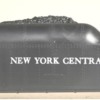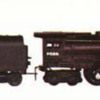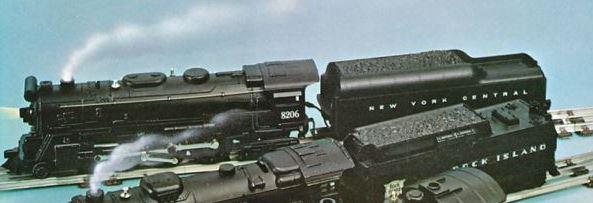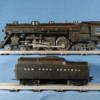Originally Posted by CharlieS:
Here is what I have found in my papers so far:
in February 1971, Lenny Dean sent out a parts survey to see whether people would order enough parts to make running them feasible. Included were:
773-117 "Penna." tender body with a list price of $3.00
2671W-5 N.Y.C. tender body with a list price of $3.00
note that the part numbers are reversed. I also wonder whether the date is correct, because:
In a document dated June 1970 Lionel announced that the following tender shells were available:
773-117 tender body (NYC) @$3.00
2671W-5 tender body (Penna.) @ $3.00
I haven't found any paper mentioning the 2671W-5 style tender bodies labeled "Lionel Lines".
I remember purchasing several from Nassau Hobb. I think it was after they had moved from Church St to Merrick Rd. I do not remember the year, or when Nassau Hobby moved.
I had assumed that these announcements referred to the shells I got from Nassau Hobby, with the web and post cast inside, but perhaps the documents refer to the close spaced tender pictured above. If so, does that mean that there are also early MPC Pennsylvania shells with the same mold characteristics?
Where were the MPC shells with the web and post, decorated for NYC, Pennsylvania, and Lionel Lines made?
My service bulletins are buried at the moment, but I think you've got it right. I thought the Lionel Lines shells were listed in that second bunch, but perhaps not. I'll have to do some digging.
I've never seen a Pennsylvania tender shell that would match the characteristics of the New York Central with the compressed lettering. What makes the NYC interesting is that weird, not-quite-true-black, UNPAINTED body. The Pennsy and Lionel Lines are clearly painted.
As for where they were made, good question. I thought I had a pretty good idea of what-was-made-and-where, but I was able to spend some time last summer with one of the few guys involved with both Hillside and Mt. Clemens in the early years. While his memory wasn't the best on specific items (he was 97 when I spoke with him!), he did explain that there was a LOT of back-and-forth going on, with Hillside being the final assembly/shipping point for more items than I had thought.
I do know that the 8206 (which was the first MPC item to use the 2671/773 tender) came out of Hillside. And given that Lenny Dean was based there in those years, my guess is that those shells came out of Hillside. Having said all that, I may have an internal memo around here that contradicts the above. Again, I need to do some digging.
TRW




















